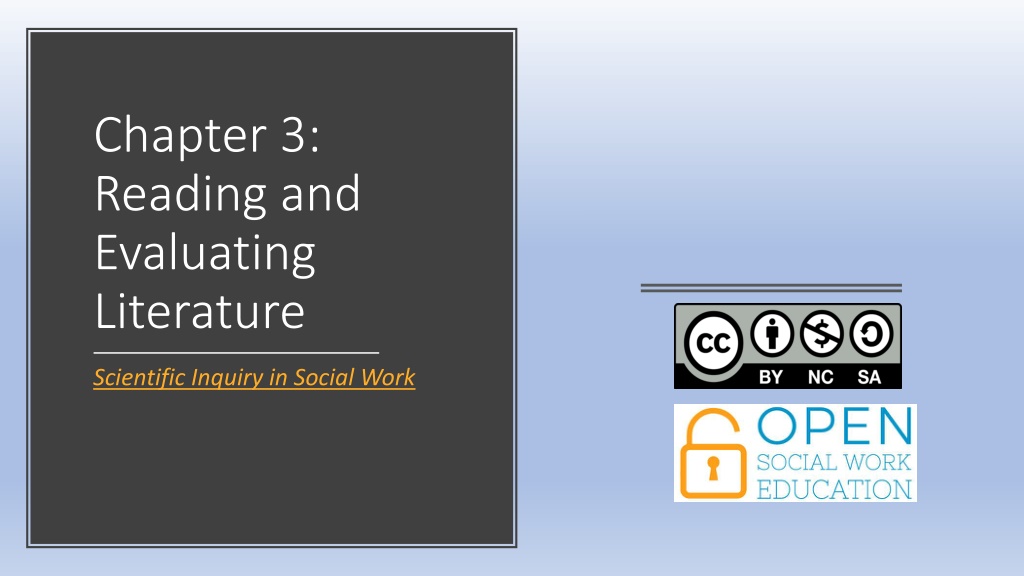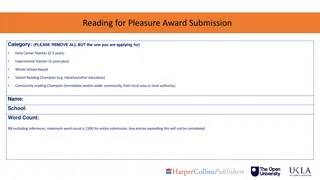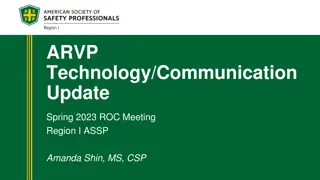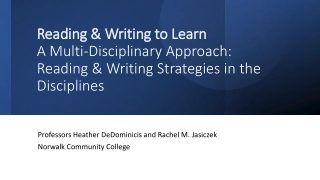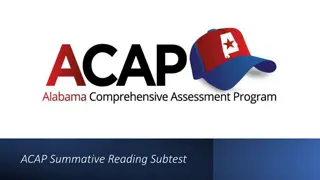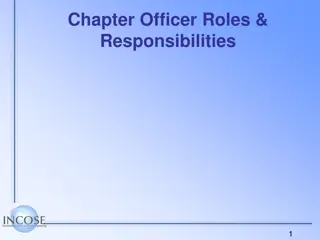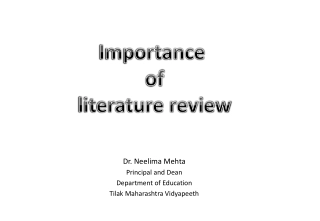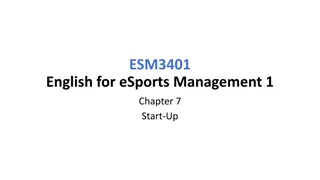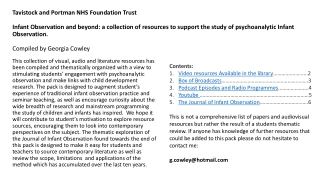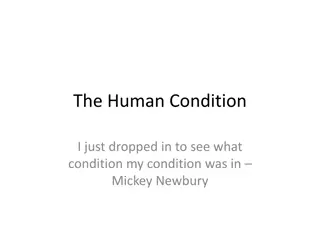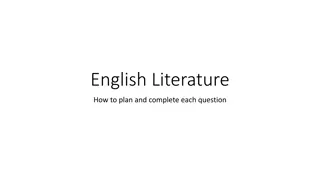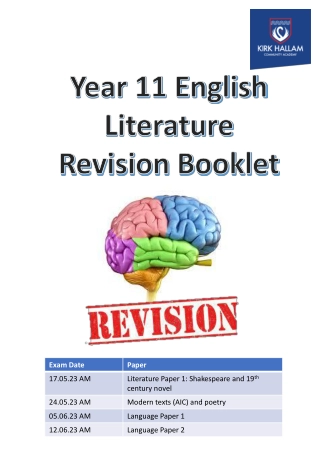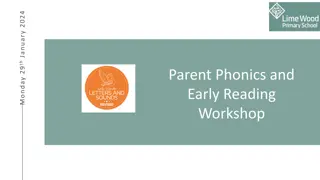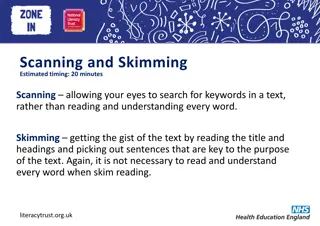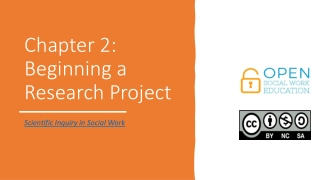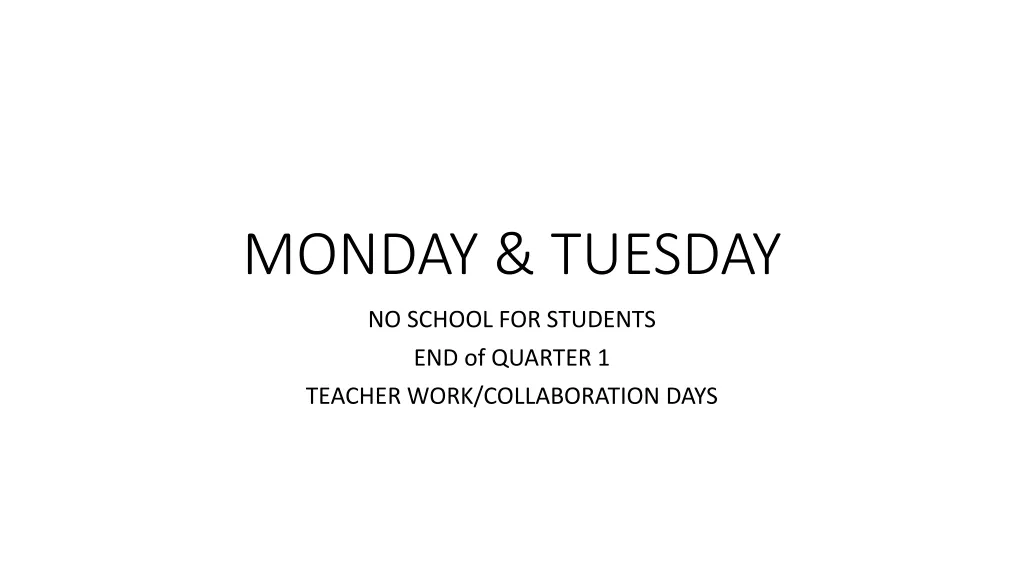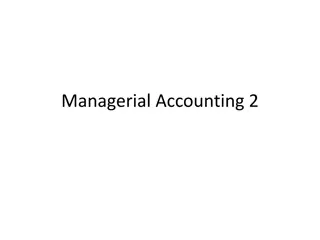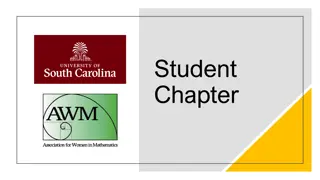Chapter 3: Reading and Evaluating Literature
Delve into the intricacies of crafting research proposals in social work, from understanding literature to formulating research questions. Explore the significance of research proposals and how they are utilized in seeking funding, approval, and support for various projects in social work settings.
Download Presentation
Please find below an Image/Link to download the presentation.
The content on the website is provided AS IS for your information and personal use only. It may not be sold, licensed, or shared on other websites without obtaining consent from the author. Download presentation by click this link. If you encounter any issues during the download, it is possible that the publisher has removed the file from their server.
Presentation Transcript
Chapter 3: Reading and Evaluating Literature Scientific Inquiry in Social Work
Chapter Overview In this chapter, we will learn how to understand and evaluate the sources you find. We will also review how your research questions might change as you start reading in your area of interest and learn more.
Research proposal planning What do you plan to study? Why is that topic important? What do we already know about this topic? What will your research project add to what we already know? How will you gather and analyze your data? Basically, a research proposal is the introduction and methods section of an empirical journal article
Research proposal sections Research proposal sections Part 1 (Chapters 1-8) Part 2 (Chapters 9-15) Methods Problem Statement (1-2 paragraphs) What problem does your proposal address? Literature Review What do we already know? What do we need to know? Gaps in literature Proposal for how to collect and analyze data on this problem: Design and sampling Ethical considerations Measures and ideas for data analysis Critique of methodology Implications and conclusion Research question and hypothesis References
When are research proposals used? To seek funding for research To seek approval for research (at an institution like EKU) To seek other support for research (i.e., grants, state funds) We use the research proposal to focus inquiry on a specific topic and apply research skills. Social workers use research (proposal) skills when they Conduct a program evaluation Conduct a community scan Apply for grants. Conduct grant reporting. Advocate for changes to policies and programs
What is a research proposal? First step: finding literature to respond to a question about a social challenge or issue Second step: reading and interpreting research literature Third step: synthesizing literature so you can use it in practice We will work through each of these steps during our course and produce a research study proposal at the end of the class!
First step: finding literature Second step: reading literature Third step: synthesizing literature Conceptualizing a project: Example - Studying Social Worker Burnout Let s take the topic of burnout in social work as an example. How do you feel about this topic? What do you already know? Do you have any biases about it? What kind of literature should we look for?
Conceptualizing a Project on Social Worker Burnout Let s find some literature on SWer burnout: Consider: 1. Keywords what words would you use to help search for SW burnout? Finding a database google scholar, EKU libraries, etc Skimming abstracts does this article give me needed information? Look for authors and journal names Examine references of other article ideas Search for meta analyses and systematic reviews How specific is our focus? What literature is relevant? Social work only? Specific context? Human services, health professions, etc.? 2. 3. What is our working definition for burnout? Is there a better one? How about a theory for burnout? 4. 5. What are some causes and effects of burnout? What is burnout associated with? 6.
Is it an Empirical or Non-empirical Article? Empirical Articles Non-empirical Articles Provide information based on data analysis conducted by the author(s) No specific structure Usually have these subheadings or sections (names sometimes vary): Introduction/Lit Review: background of social problem, specific variables in the article; usually ends with the research question Methods: overview of measures, operational definitions, sampling, design, and data analysis Results: usually start with descriptive statistics and demographic information on the study participants and move onto the research questions in the paper Discussion: provides context for results within literature on the topic Conclusions/limitations: provides the key takeaways of the paper References: lists the sources cited within the text of the article (hint: a great place to look for similar articles that might help with your literature review) Authors organize their articles by topic and subtopic Include articles about social theory, history, philosophy, and literature reviews Requirements for non-empirical articles: From a peer-reviewed journal Published in the past 10 years Not a book review or editor s note Not from an international journal (unless your study has an international focus) Requirements for empirical articles: From a peer-reviewed journal Published in the past 10 years Not from international journal (unless your study has an international focus Not a literature review, theory paper, or editorial
Activity: Examine an empirical article Read the article by Acker (2018) provided on blackboard. Acker, G.M. (2018) Self care practices among social workers: Do they predict job satisfaction and turnover intention? Social Work in Mental Health, 16(6), 713-727. https://doi.org/10.1080/15332985.2018.14940822. 1. Jot down your answers to each question in Table 3.1 in the book (also on next slide) 2. Note any key facts or data you might want if you were writing a research proposal on social worker burnout - Highlighting is fine 3. You don t need to write anything formal. Just rough notes. We ll share together as a class
Table 3.1 Questions worth asking while reading research reports (from DeCarlo text) Report section Questions worth asking Abstract What are the key findings? How were those findings reached? What framework does the researcher employ? Who are this study s major stakeholders? Who provided feedback? Who provided support in the form of funding or other resources? Acknowledgments Problem statement (introduction) How does the author frame their research focus? What other possible ways of framing the problem exist? Why might the author have chosen this particular way of framing the problem? Literature review (introduction) How selective does the researcher appear to have been in identifying relevant literature to discuss? Does the review of literature appear appropriately extensive? Does the researcher provide a critical review? Where was the data collected? Did the researcher collect their own data or use someone else s data? What population is the study trying to make claims about, and does the sample represent that population well? What are the sample s major strengths and major weaknesses? Sample (methods) How were the data collected? What do you know about the relative strengths and weaknesses of the method employed? What other methods of data collection might have been employed, and why was this particular method employed? What do you know about the data collection strategy and instruments (e.g., questions asked, locations observed)? What don t you know about the data collection strategy and instruments? Data collection (methods) How were the data analyzed? Is there enough information provided for you to feel confident that the proper analytic procedures were employed accurately? Data analysis (methods) What are the study s major findings? Are findings linked back to previously described research questions, objectives, hypotheses, and literature? Are sufficient amounts of data (e.g., quotes and observations in qualitative work, statistics in quantitative work) provided in order to support conclusions drawn? Are tables readable? Results Does the author generalize to some population beyond her/his/their sample? How are these claims presented? Are claims made supported by data provided in the results section (e.g., supporting quotes, statistical significance)? Have limitations of the study been fully disclosed and adequately addressed? Are implications sufficiently explored? Discussion/conclusion
As you review an article, ask yourself: Is it outdated? Has old sources? Are the credentials of the author valid? Who was the publisher research journal? government or educational site? Is it relevant to your topic? Is it important in the understanding of your topic? Does it appear to be accurate, reliable and objective? What is its scope? Is it a tiny study or does it have strong merit? Evaluating Sources Examine the strength of the evidence: Meta-analysis and meta-synthesis Experiments and quasi-experiments Longitudinal surveys Cross-sectional surveys Qualitative studies
You might begin using the PICO method (primarily health sciences method, but it can also be useful for narrowing/refining a research question in the social sciences). A way to formulate an answerable question using the PICO model could look something like this: P: Patient, population or problem - What are the characteristics of the patient or population? (e.g., gender, age, other demographics) What is the social problem or diagnosis you are interested in? (e.g., poverty or substance use disorder) I: Intervention or exposure - What do you want to do with the patient, person, or population (e.g., treat, diagnose, observe)? For example, you may want to observe a client s behavior or a reaction to a specific type of treatment. C: Comparison -What is the alternative to the intervention? (e.g., other therapeutic interventions, programs, or policies) For example, how does a sample group that is assigned to mandatory rehabilitation compare to an intervention that builds motivation to enter treatment voluntarily? O: Outcome - What are the relevant outcomes? (e.g., academic achievement, healthy relationships, shame) For example, how does recognizing triggers for trauma flashbacks impact the target population? Refining your Question: Using the PICO Method
Examples of PICO method to refine a research question Examples of PICO method to refine a research question Can music therapy help autistic students improve their communication skills? Population (autistic students) Intervention (music therapy) How effective are antidepressant medications on anxiety and depression? Population (clients with anxiety and depression) Intervention (antidepressants) How does race impact help-seeking for students with mental health diagnoses? Population (students with mental health diagnoses, students of minority races) Comparison (students of different races) Outcome (seeking help for mental health issues)
Working questions check-in What are people s working questions? What do you think you want to research? What has changed from last week? Too many sources? Too few sources? Topic too broad or too specific? What do you still need to do to hone your topic?
